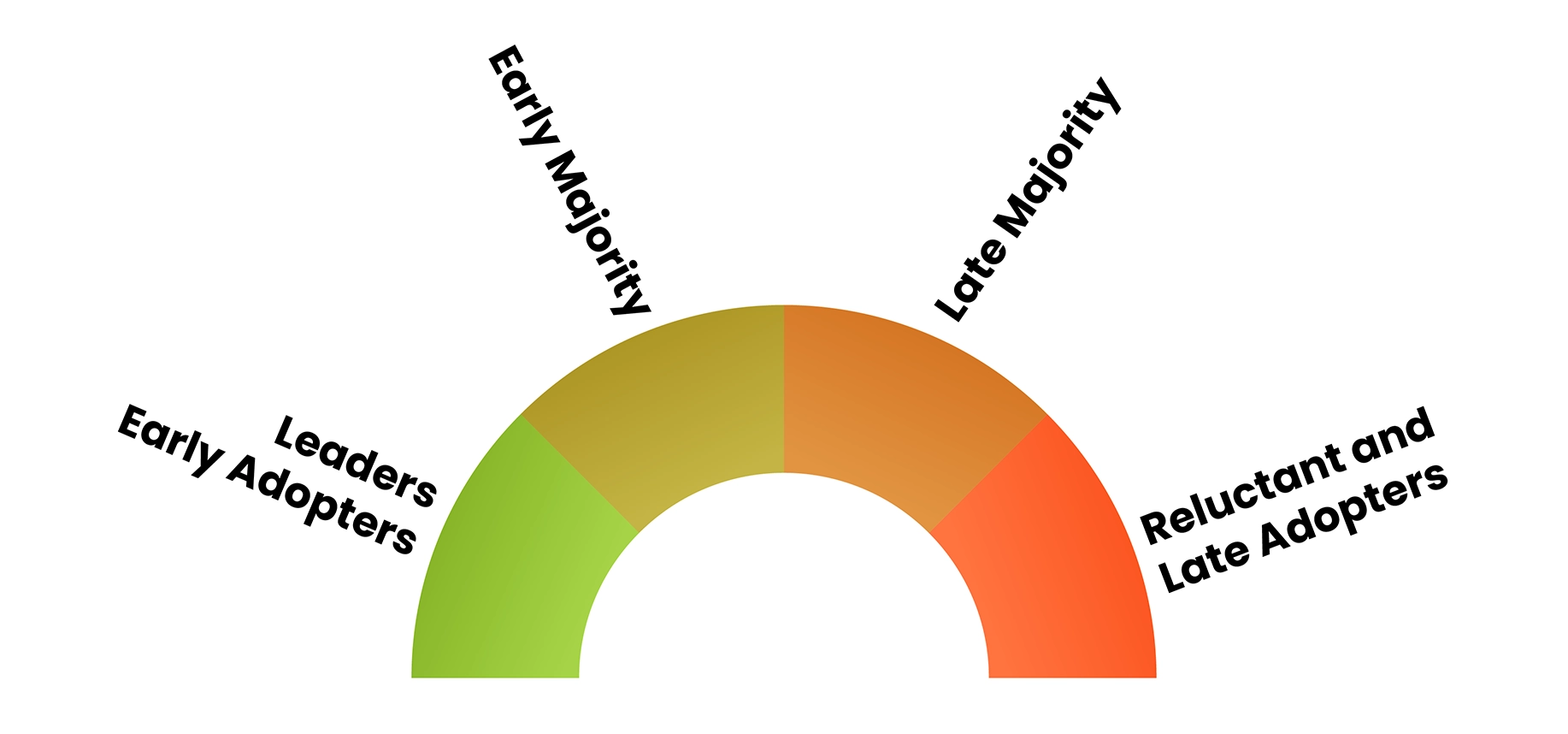Overcoming Barriers to Action
How to build resilience, motivation, and optimism to overcome inaction
To move forward with courage, realism, and optimism, we need to overcome some common barriers to action and build resilience against the forces that cause or reinforce inaction.
Nine common reasons for inaction and how to overcome them.
How many can you relate to?
How to stay positive and motivated in light of all the noise, confusion, and lack of action by others
Feeling doubtful, demotivated, or anxious in response to conversations, news and other sources of information that cast climate action and the world’s response to climate change in a negative, pointless, or questionable light is understandable.
The key is to remember that the energy transition is unstoppable at this point; it is only a matter of time. Above all of the debate, denial, doubts and delays, there is a clear directional push towards a clean energy future.
Don’t be swayed. Stay the course. Build your plan. Join those that are working to stop additional global warming.

Here are just a few examples of how unhelpful information can lead to inaction and an alternative way of looking at it to stay on course.

“The footprint of Canada and its fossil fuel sector is very small.”
e.g. “Canada produces less than 1.5% of the world’s greenhouse gas (GHG) emissions. Of that, Canada’s oil and natural gas industry produces about 28% of our 1.5% of world emissions.” — Canadian Association of Petroleum Producers
Fuels inaction because:
This statement might make you think that we shouldn’t have to make big changes, especially if those that are much bigger contributors don’t seem as though they are making changes. We really aren’t a big part of the problem.
Why action matters:
This statement misrepresents the problem.

on a per capita basis Canada is one of the highest emitting countries in the world (top 5-6.)

even on an absolute basis, Canada is one of the highest emitting countries in the world (top 10-12.)

the 28% referenced above only accounts for the extraction/processing/storage and transmission of oil and gas, not the use of it. Fossil fuel emissions cause 80% of global warming and Canada is one of the worst emitters.
Stay the course — reduce your fossil fuel footprint.

“But what about China?”
e.g. “…if you want to go and really change the environment, then we need to start telling China and India that they have to lower their emissions. That’s what our problem is.” — Nikki Haley, 2023
“About 69.5 gigawatts (GW) of coal plant capacity came online last year, of which two-thirds were built in China…”
Fuels inaction because:
It makes us feel that it is pointless to take action when other countries, that we have no control over, are burning more coal, dwarfing any impact we could make and making the problem worse. One of the key problems with this position is that it sets up impossible conditions for action where no one will act if others aren’t.
Overcoming inaction:
Burning coal and opening more coal plants is obviously a problem that countries need to address. But if anything, it is a reason for more action — not less action.

Paradoxically, one of the reasons that coal is being used is that climate change is threatening clean sources of energy and increasing the demand for energy.
But more to the point, everyone needs to lower their emissions and every country is a ‘mixed bag’ of positive action and harmful action.
China, though the world leader in coal burning, is also the world leader in solar — installed capacity and global supply chain (see The World is Doing More Than You May Know), a leader in EV manufacturing, supply chain and adoption, and leads the world in reforestation — increasing our carbon sinks. They also have a relatively low per capita footprint.
By many measures they are far further along than Canada is in their climate action journey.
Stay the course—help Canada reduce its emissions.

“Technology and innovation will save us.”
e.g. “Carbon capture, utilization and storage (CCUS) will spearhead energy transformation” — Canadian Energy Centre, 2023
Fuels inaction because:
We may feel that innovations will come along that will solve our problems without us having to change very much or that will make deep and rapid changes today unnecessary, when in fact, even if those changes do come — and as cool and exciting as they may be, they will not replace the need to phase-down fossil fuel use as much as possible today.
There is just no way around that. Serious progress needs to be made before 2030.
Overcoming inaction:
Allow yourself to feel encouraged by innovation and future solutions and leverage them as reasons for hope. Recognize that there is a huge gulf between identifying a potential solution and having a commercially viable, widely adopted, proven solution in place and that getting there will mean overcoming many barriers and, likely, a large amount of financing.
As for the CCS example, despite decades of work on CCS, it is not commercially viable at scale yet. We will likely require it for the residual carbon emissions that we cannot avoid even after we transition to clean energy but this does not in any way reduce the efforts we need to make now.
As for the article quoted above, even by the Canadian Energy Centre’s own optimistic projections, with significant investment and assumptions about overcoming barriers to scaling, with a 100% success rate for hundreds of nascent projects around the globe, at best CCS will be able to capture 1–2% of the reduced level of emissions projected for 2030. It will not help us get to the 2030 goal of a 43% reduction in emissions by 2030 required to meet the global temperature targets.
The reality is that there is no silver bullet and we don’t have time to wait for new technology to save us, even if we agree that we need to invest in new and unproven solutions for the future. We have to decarbonize now with the many good options we have today.

“Be skeptical and wary of the climate mitigation solutions.”
e.g. “Fires caused by lithium-ion batteries are on the rise across Canada, according to the organization that represents the country’s fire chiefs…”
Fuels inaction because:
We don’t want to die in an exploding car. More seriously, people are cautious about change and, in some cases, will use any red flag, vetted or not, to delay change.
We also are bombarded with headlines every day and tend not to read the full-story a lot of the time so it’s easy to be misinformed.
Overcoming inaction:
It is understandable that scary headlines would make people pause and it is generally healthy to have a skeptical mind. However, the problem arises when skepticism is simply a red flag that results in doubt and inaction.
Instead, turn skepticism into an open question (are EVs safe? Do they randomly burst into flames?) and then answer your question with a bit of research.
As per the article above, the issue is primarily related to e-bikes and e-scooters that don’t have certified batteries or that have batteries that have been modified or damaged.
And if you look at the statistics more generally, the chances of an EV passenger vehicle catching fire is far lower than the chances of a gas car catching fire — most people are not deterred from driving the latter in light of this risk.
Don’t let a headline be an excuse not to act. Ask and answer questions. Keep moving forward.
There are a gazillion and one examples we could use to demonstrate the ways information, disinformation, and debate can cause people to delay climate action.
But if your orientation is to be part of the solution, you can understand the information in context, dispel the disinformation, and weigh in on the debates while moving forward with an action plan that works for you.















